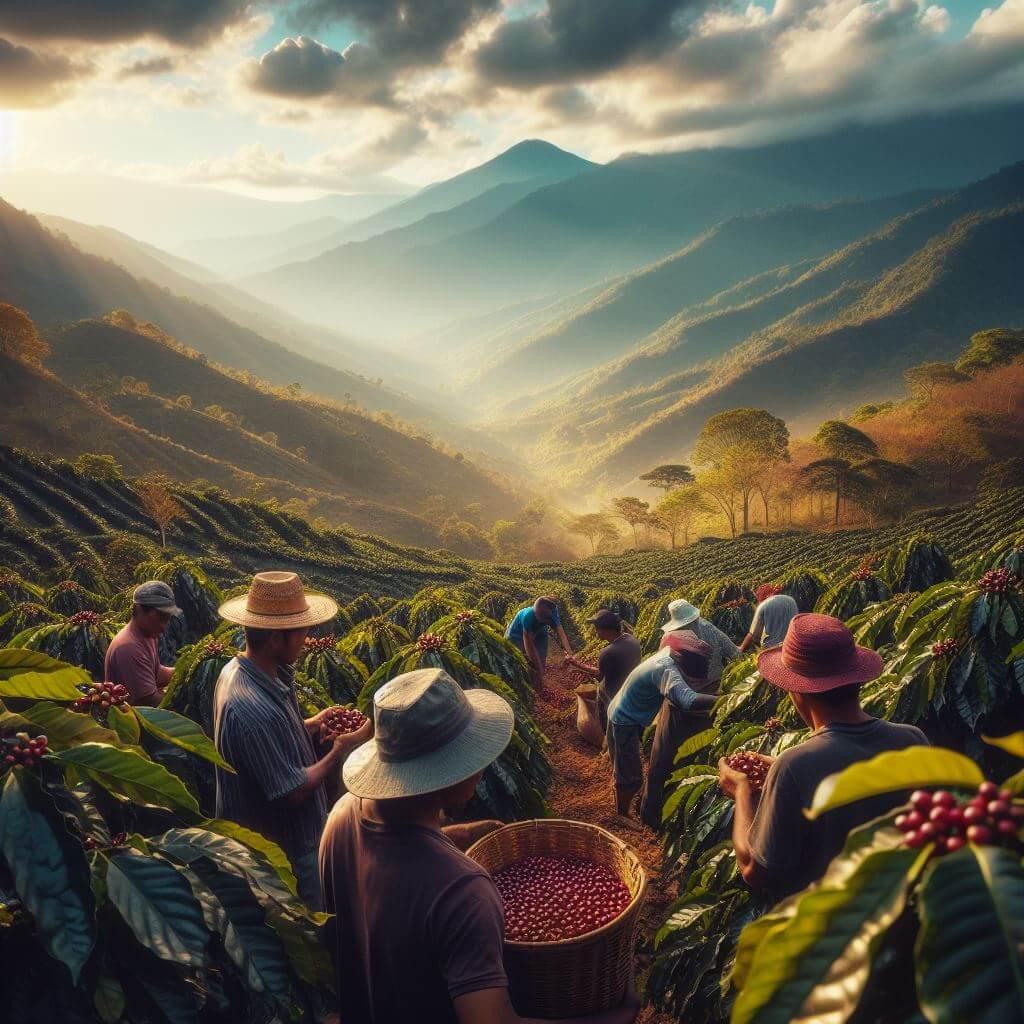
Kenya, an East African country known for its incredible landscapes and rich cultural heritage, is also a major player in the global coffee industry. Kenyan coffee has earned a prestigious place in the coffee world thanks to its distinctive flavor profile, often characterized by bright acidity, full body, and a winey aftertaste.
The history of coffee in Kenya dates back to the late 19th century, when the British, who were the colonial rulers at the time, introduced the crop to the region. Although coffee is not indigenous to Kenya—the coffee plant originates from Ethiopia, just to the north—the country’s favorable climate and fertile soil soon proved ideal for growing coffee. The first coffee seedlings were planted in Kenya around 1893 by French missionaries in Buri, near the coastal city of Mombasa. The introduction marked the beginning of coffee cultivation in the region.
By the 1920s, coffee cultivation had expanded significantly, with European settlers establishing large plantations in central Kenya, particularly in areas such as Kiambu, Muranga, and Nyeri. These regions, characterized by high altitude and fertile volcanic soil, proved to be particularly suitable for growing coffee. Coffee eventually became one of Kenya’s most valuable exports, and the economic landscape began to change as more locals began growing coffee, either as laborers on European-owned plantations or as small farmers.
Independence in 1963 was a significant turning point for Kenya, including for its coffee industry. After independence, the Kenyan government implemented several reforms aimed at redistributing land from former white settlers to the African population. This period saw the growth of small farms and the formation of cooperatives, which played a crucial role in empowering local farmers. Today, it is estimated that about 70% of Kenya’s coffee is produced by smallholder farmers, most of whom are organized into cooperative societies.
To monitor and regulate the growing coffee sector, the Kenyan government established the Kenya Coffee Board in 1933. The purpose of the Council was to ensure quality control, facilitate the marketing of Kenyan coffee both nationally and internationally, and provide financial and technical support. help to farmers. The establishment of the Board marked the era of structured and organized coffee production in Kenya. It has also helped streamline marketing and certification processes, allowing Kenyan coffee to maintain its reputation as a high-quality coffee.
Several coffee research institutions were established to further support the industry. One of the most famous is the Coffee Research Institute (CRI), founded in 1944. The main focus of the institute is on improving coffee yield and resistance to pests and diseases. They conduct extensive research on soil health, pest control, and new coffee varieties. Over the years, CRI has played a critical role in helping Kenyan farmers adopt innovative farming practices, thereby improving the quantity and quality of coffee produced.
The coffee auction system was introduced in Kenya in the late 1930s, providing a transparent platform for the sale of coffee. An integral part of this system was the later-founded Nairobi Coffee Exchange. It functions as an auction house where coffee is sold to the highest bidder, ensuring competitive prices for farmers. The auction system also helps to maintain the high standards of Kenyan coffee by offering detailed information on coffee characteristics, variety, and origin.
Cultivation Practices
The climatic and geological conditions of Kenya are very favorable for coffee cultivation, especially in the regions located between the East and West Rift Valleys. These regions boast an altitude of 1,500 to 2,100 meters above sea level. This high altitude is crucial because it causes the coffee cherries to ripen slowly, allowing for more complex flavors to develop in the beans. Moderate temperatures combined with an even rainfall of 1,100 to 2,000 millimeters per year create an almost ideal environment for growing high-quality Arabica coffee.
Kenyan coffee is mainly grown in regions such as Nyeri, Kiambu, Murang’a, Kirinyaga, and Embu. These areas are especially known for their rich volcanic soil, which is saturated with essential nutrients. This fertile soil contributes greatly to the unique flavor profile of Kenyan coffee, which is often described as bright acidity, full body, and a pleasant wine aftertaste. The high phosphorus content in the soil additionally enhances the aroma of coffee, making it a favorite among connoisseurs around the world.
Most of Kenya’s coffee is grown on small farms, usually less than five hectares. These farms are often organized into cooperative societies created to support farmers in various aspects of coffee production and marketing. These cooperatives provide vital services such as access to agricultural inputs, such as fertilizers and pesticides, that are necessary to maintain the health and productivity of coffee plants. They also facilitate training programs, often in collaboration with agricultural extension officers and research institutions. These programs teach farmers the best farming practices, such as proper pruning techniques, pest and disease management, and sustainable farming practices.
One of the notable features of coffee cultivation in Kenya is the emphasis on traditional hand-harvesting methods. Unlike mechanical harvesting, handpicking allows for selective picking, ensuring that only ripe cherries are picked and unripe ones remain on the plant to ripen. This careful process greatly affects the overall quality of the coffee. After harvesting, the coffee cherries undergo a wet processing, also known as the washing process. This involves removing the outer pulp of the cherries before fermentation to break down the mucilage. The beans are then washed and dried, often in the sun, to achieve the desired moisture content.
Quality control is another important aspect of growing Kenyan coffee. The Coffee Board of Kenya oversees a strict grading system to ensure that only the best beans reach the market. Coffee beans are classified by size, shape, and density: from AA (the highest quality) to E, TT, and T. AA beans, known for their larger size and higher density, are particularly popular in the international market. This careful grading process ensures consistency of quality, which is one of the reasons why Kenyan coffee commands the highest prices in the world.
The coffee growing process in Kenya is greatly influenced by research and innovation from institutions such as the Coffee Research Institute (CRI). Founded in 1944, CRI focuses on developing high-yielding, disease-resistant coffee varieties. They conduct extensive research to improve agronomic practices, improve soil health, and develop effective pest and disease management strategies. The breeding of cultivars such as SL28 and SL34, known for their disease resistance and superior cup quality, has played an important role in sustaining Kenya’s coffee industry.
Kenya also pays a lot of attention to the sustainability of coffee production. Many farmers are implementing green practices such as using organic fertilizers, implementing water conservation practices, and conserving biodiversity on their farms. Several small farms are switching to organic coffee production to meet the growing demand for organic coffee. Certification programs such as Fair Trade, Rainforest Alliance, and UTZ are also gaining momentum, giving farmers better market access and ensuring they follow environmentally friendly and socially responsible farming practices.
Irrigation systems used on coffee farms in Kenya play a critical role in mitigating the effects of erratic rainfall patterns. Traditional rain-fed farming is complemented by modern irrigation techniques to ensure that the coffee plants receive sufficient water throughout the year, promoting healthy growth and high yields. Some farms use drip irrigation, which conserves water by delivering it directly to the plant’s root zone, thereby maximizing water efficiency.

